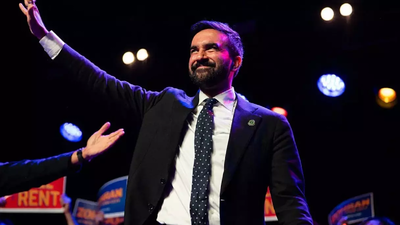
The intersection of race, representation, and merit remains a contentious space in U.S. higher education.
In an age when identity is both a personal declaration and a political currency, how it’s used—and who uses it—has become a lightning rod in American higher education. The recent controversy involving New York City mayoral frontrunner Zohran Mamdani, who marked both “Asian” and “Black or African American” on his Columbia University application, has reignited a debate that sits uncomfortably at the intersection of race, admissions, and Indian diaspora dynamics.This isn't the first time an Indian-origin individual has come under scrutiny for leveraging racial identity. A decade ago, Vijay Chokal-Ingam, Mindy Kaling’s brother, confessed to posing as Black to get into medical school. His admission exposed loopholes in affirmative action and raised eyebrows across the academic world.Now, with Mamdani in the national spotlight, the question is no longer whether race-based admissions are fair—but whether Indian-origin applicants are distorting identity for gain while carrying forward deeply entrenched racial and caste biases of their own.
The Zohran Mamdani case: A checkbox, a candidacy, and a controversy
Zohran Mamdani, the Indian-Ugandan son of acclaimed filmmaker Mira Nair, is not just a member of the New York State Assembly—he’s now the Democratic nominee for NYC mayor, leading polls ahead of Eric Adams, Andrew Cuomo, and Curtis Sliwa But what should have been a straightforward rise for a progressive candidate has turned contentious. A recent leak revealed that in 2009, Mamdani had identified as both Asian and Black on his Columbia University application.
Critics—including incumbent mayor Adams—accused him of misrepresenting his racial identity to benefit from affirmative action. Mamdani, however, clarified that he also wrote ‘Ugandan’ in an open-ended field and that he identified based on his unique biracial background as an Indian from East Africa.This controversy underscores a long-standing problem: Racial categories in U.S. college admissions are rigid, reductive, and outdated.
For someone like Mamdani, whose lineage spans continents, the form simply didn't fit. But in the age of performative equity, even honest self-expression can be recast as strategic manipulation.
Mindy Kaling’s brother: When pretending to be black was the strategy
The Mamdani debate is eerily reminiscent of Vijay Chokal-Ingam, who in the late 1990s darkened his profile, shaved his head, used his middle name “Jojo,” and claimed Black identity to boost his odds of getting into med school.
He succeeded.Later, he weaponized his own experience to rail against affirmative action, calling it a “system of legalized racism” and claiming that he had proved how easy it was to game the system. His actions—and unapologetic justifications—sparked fierce backlash, particularly among Black student groups who argued that he had stolen a space meant for someone genuinely underrepresented.
The Indian bias no one talks about
These two cases—one about multiracial complexity, the other about calculated deception—might seem vastly different.
But they reveal a shared undercurrent: the uncomfortable bias embedded in Indian-origin communities, both within India and in the diaspora.Let’s call it what it is:
- Many Indian immigrants, particularly those from upper-caste, urban, English-speaking backgrounds, carry with them a deeply internalized hierarchy. In India, this plays out through caste, skin tone, and economic status. Abroad, it mutates into proximity to whiteness and a dismissive attitude toward Black and Indigenous communities.
- There exists a double standard—priding oneself on South Asian identity when convenient, yet seeking to benefit from marginalized identities when advantageous.
In other words, many in the diaspora aspire to whiteness, yet exploit Blackness.
What Indian students should learn from this
For the millions of Indian students aspiring to global universities, these controversies are more than news—they're cautionary lessons.Be honest about your identity.
Admissions committees value authenticity more than strategy. Stretching the truth on race, caste, or class may backfire—politically, professionally, and morally.Recognize inherited biases. It’s easy to scoff at race-based admissions without examining India’s own legacy of caste-based privilege. Take that lens with you when applying abroad.Push for better systems, don’t game them. If the racial categories on college forms are insufficient, challenge them.
But don’t exploit them. Advocate for multiracial, decolonized identity categories that reflect the diversity of today’s applicants.
Identity is not a shortcut
Whether it’s a future mayor of New York or a frustrated med school aspirant, these stories remind us that racial identity is never just a line on a form—it’s a lived history. If we treat it like a lever to pull for advantage, we betray not only the people these policies were designed to help but also our own credibility.
For Indian-origin students in particular, the question is urgent: Will you use identity to open doors—or to shut them on others?

 7 hours ago
56
7 hours ago
56




























 English (US)
English (US)